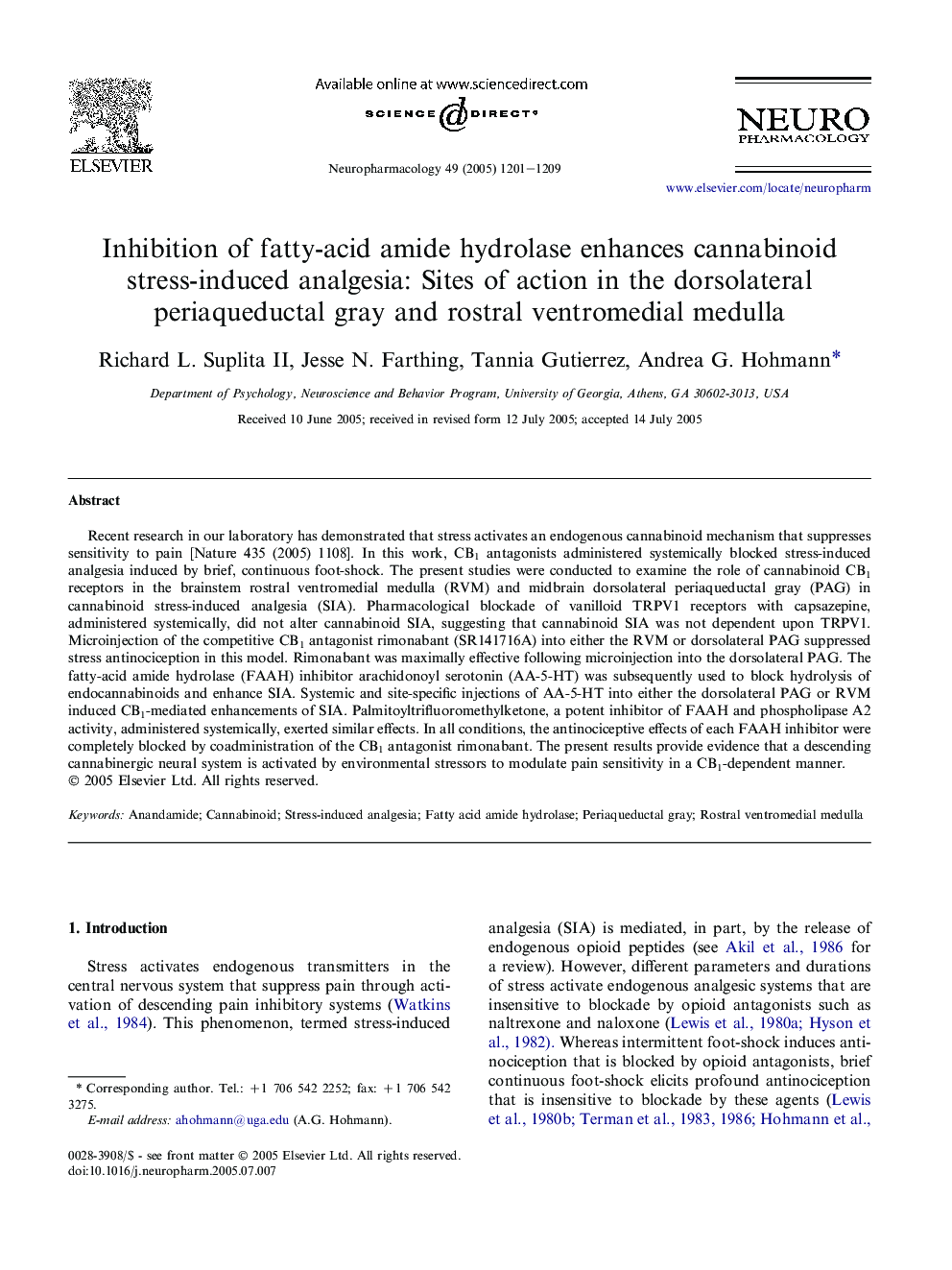| کد مقاله | کد نشریه | سال انتشار | مقاله انگلیسی | نسخه تمام متن |
|---|---|---|---|---|
| 8998191 | 1115607 | 2005 | 9 صفحه PDF | دانلود رایگان |
عنوان انگلیسی مقاله ISI
Inhibition of fatty-acid amide hydrolase enhances cannabinoid stress-induced analgesia: Sites of action in the dorsolateral periaqueductal gray and rostral ventromedial medulla
دانلود مقاله + سفارش ترجمه
دانلود مقاله ISI انگلیسی
رایگان برای ایرانیان
کلمات کلیدی
موضوعات مرتبط
علوم زیستی و بیوفناوری
علم عصب شناسی
علوم اعصاب رفتاری
پیش نمایش صفحه اول مقاله

چکیده انگلیسی
Recent research in our laboratory has demonstrated that stress activates an endogenous cannabinoid mechanism that suppresses sensitivity to pain [Nature 435 (2005) 1108]. In this work, CB1 antagonists administered systemically blocked stress-induced analgesia induced by brief, continuous foot-shock. The present studies were conducted to examine the role of cannabinoid CB1 receptors in the brainstem rostral ventromedial medulla (RVM) and midbrain dorsolateral periaqueductal gray (PAG) in cannabinoid stress-induced analgesia (SIA). Pharmacological blockade of vanilloid TRPV1 receptors with capsazepine, administered systemically, did not alter cannabinoid SIA, suggesting that cannabinoid SIA was not dependent upon TRPV1. Microinjection of the competitive CB1 antagonist rimonabant (SR141716A) into either the RVM or dorsolateral PAG suppressed stress antinociception in this model. Rimonabant was maximally effective following microinjection into the dorsolateral PAG. The fatty-acid amide hydrolase (FAAH) inhibitor arachidonoyl serotonin (AA-5-HT) was subsequently used to block hydrolysis of endocannabinoids and enhance SIA. Systemic and site-specific injections of AA-5-HT into either the dorsolateral PAG or RVM induced CB1-mediated enhancements of SIA. Palmitoyltrifluoromethylketone, a potent inhibitor of FAAH and phospholipase A2 activity, administered systemically, exerted similar effects. In all conditions, the antinociceptive effects of each FAAH inhibitor were completely blocked by coadministration of the CB1 antagonist rimonabant. The present results provide evidence that a descending cannabinergic neural system is activated by environmental stressors to modulate pain sensitivity in a CB1-dependent manner.
ناشر
Database: Elsevier - ScienceDirect (ساینس دایرکت)
Journal: Neuropharmacology - Volume 49, Issue 8, December 2005, Pages 1201-1209
Journal: Neuropharmacology - Volume 49, Issue 8, December 2005, Pages 1201-1209
نویسندگان
Richard L. II, Jesse N. Farthing, Tannia Gutierrez, Andrea G. Hohmann,